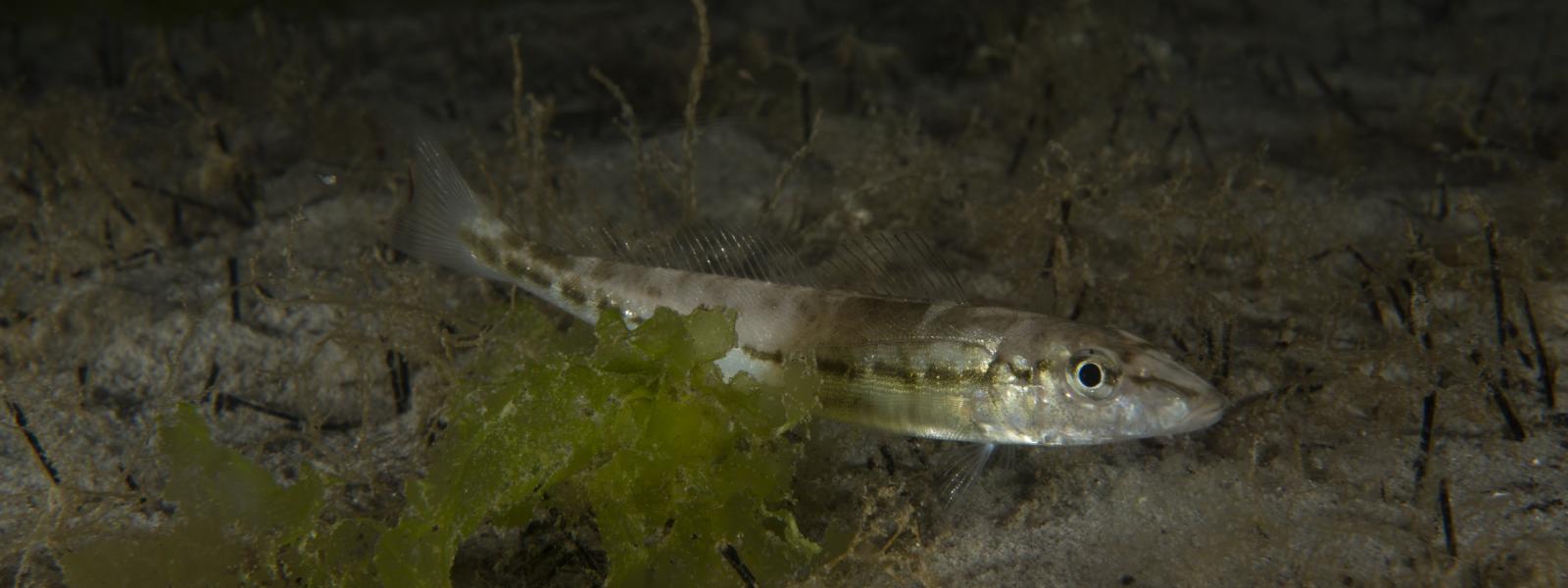King George whiting through a camera lens

Reductions and re-distribution of seagrass will have implications for a range of marine and estuarine fish and the ecosystems that support them. One study used underwater video to record effects of changes in seagrass habitat on King George whiting (KGW).
Local KGW spawn in coastal waters to the west of Victoria’s major bays and inlets, most likely in far western Victoria to south-eastern South Australia.
KGW eggs are buoyant so they’re carried by water currents all the way from South Australia, before entering sheltered marine habitats, mainly in Port Phillip Bay and Western Port. The journey can take three to five months and they arrive in the bays in spring, when they have reached around 15–20 mm length.
Using Underwater Stereo Video
Study sites
Sampling was done in four areas of Port Phillip Bay: Eastern Beach, Grand Scenic, Mud Islands and Swan Island; between October 2010 and March 2011. Habitats sampled were the subtidal seagrass and unvegetated sand/mud that sits at the edge of seagrass.
Remote underwater video
Fish were sampled using remotely deployed stereo video systems developed by SeaGIS Pty. Ltd., Australia. Stereo systems consisted of a frame with two Canon HV20 cameras with wide angle lenses (7 mm focal length) in housings angled inward at 8 degrees, on bars 65 cm apart and 40 cm above the sea floor, and a diode arm for synchronisation of cameras. Video was un-baited to prevent attraction of fish from nearby habitats. Videos were retrieved one hour after deployment.
Experimental design
Each area was sampled in spring and autumn. An area was sampled over two days, and three
frame drops were allocated randomly to each habitat by depth combination (six drops per day). A total of 12 hrs of video footage was taken by the stereo cameras over two days in each area. The same procedure was used for baited video at Mud Islands in December 2010 and for shallow habitat only in May 2011.
Video analysis
Video was assessed using two different methods:
- MaxN: the greatest number of a given fish species in a single video frame.
- TiV: the total time in seconds that at least one King George whiting was in view of the camera.
The computer software packages EventMeasure and Photo Measure were used to get species MaxN and TiV data and estimate fish lengths. Lengths were measured for fish from a single video frame, with consecutive measurements at least five minutes apart to avoid the possibility of measuring the same fish more than once.
What's next?
The study shows that shallow seagrass edge habitat continues to be important for juvenile KGW over the first few years of growth.
The resilience of seagrass to climate change will improve where seagrass isn't damaged by human activity.